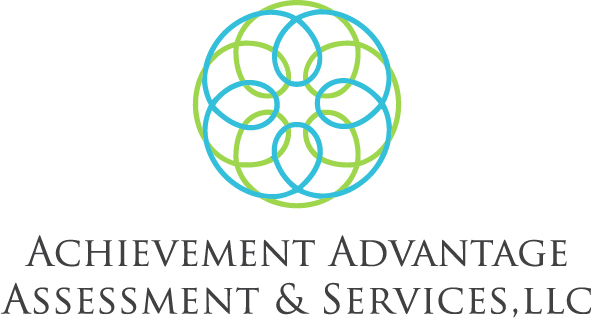After the team agrees a disability is suspected, a school-based evaluation will be initiated. There are three stages to the school-based evaluation process: the planning and consent, the evaluation process, and the eligibility determination. The school-based evaluation process is known as the Evaluation Team Report (ETR). You may also hear it referred to as a Multi-Factored Evaluation (MFE), which is the term used prior to ETR. Through this process, typically, the school psychologist is the team chairperson and is best able to respond to your questions.
Planning and Consent for Evaluation (ETR)
From the date that the team suspects that your child may have a disability, the school has 30 days to gain your consent for an evaluation. Within that 30-day period, the team will hold at ETR planning meeting. Typically, this meeting consists of you, your child’s general education teacher, intervention specialist, school psychologist, and district administrator. This meeting is designed to gain your informed consent for the school team to conduct an evaluation of your child. At this meeting, the team will discuss which areas of disability are suspected under IDEA. These are the thirteen categories in which the team can suspect that your child meets disability criteria under: Autism, Deaf-Blindness, Deafness, Emotional Disturbance, Hearing Impairment, Intellectual Disability, Multiple Disabilities, Orthopedic Impairment, Other Health Impairment, Specific Learning Disability, Speech or Language Impairment, Traumatic Brain Injury or Visual Impairment Including Blindness. Then, the team will develop an evaluation plan based on the reason for referral and the areas of disability that are suspected. This is done through completing the following documents: Referral for Evaluation (PR-04), ETR Planning Form, Parent Consent for Evaluation (PR-05), and Prior Written Notice (PR-01).
The Referral for Evaluation (PR-04) form explains the reason that your child is being referred for an evaluation. The reason for referral is supported by information regarding your child’s educational history, attendance, background information, health data, and environmental factors. The ETR planning form determines which assessments will be completed and incorporated in your child’s evaluation. This form details all of the assessment areas that are related to the suspected disability categories, whether or not current data is available in those areas, whether or not additional information will be collected in a particular area, and who is responsible for conducting the assessment. The planning form drives the entire evaluation; therefore, it is extremely important that you are comfortable with the things that are detailed on this form, and you agree that it will provide a comprehensive evaluation for your child. The Parent Consent for Evaluation (PR-05) is the document in which you grant your voluntary, informed consent for the school team to put the evaluation plan into action. Signing the consent form also verifies that you received a copy of the A Guide to Parents Right in Special Education, which is a document detailing your rights and your child’s rights through this process, and that you understand the all the information provided. The district should also provide you with a Prior Witten Notice (PR-01), which explains the type of action the district is proposing to take and an explanation as to why the district is proposing that action. We would recommend asking for a copy of the paperwork for your records.
Throughout the evaluation process, new areas of concerns may arise that the team will want to assess further. In order to evaluate additional areas, the team must amend the planning form. Adjustments to the planning form can only be made with your express consent. Another Prior Written Notice (PR-01) should be provided to you detailing the amendments made and the data supporting why additional assessment is necessary.
Special Education Evaluation (ETR)
From the date that you attend the planning meeting and grant your consent for your child to go through the ETR process, the school has 60 days to complete the evaluation and hold an ETR results/eligibility determination meeting. During this 60-day period, the multidisciplinary team will complete assessments in all of the areas indicated on the ETR planning form. Typically, the multidisciplinary team consists of the parent, school psychologist, general education teacher, intervention specialist, speech/language pathologist, occupational therapist, and a district representative. Other team members can be added depending on the areas of concern. Almost all psychoeducational evaluations will include assessment in the following areas: standardized assessment in the areas of cognition, academic achievement, communicative status, and social/emotional skills; information provided by parent; background information; observation; progress in the general curriculum; data from interventions; and vision and hearing screenings. Depending on the referral concerns and the disability suspected the team can also assess: fine motor skills; gross motor skills; adaptive skills; behavior; physical exam/general health; vocational/transition; Braille needs; audiological needs; and Assistive Technology needs. These assessments are almost exclusively conducted in a one-on-one testing session with the individual with expertise in that particular area.
The ETR document has four separate sections. After completing the testing portion of their evaluation, each examiner completes what is known as a Part 1. A Part 1 is a written report that is divided into three sections. In the first section of a Part 1, each evaluator summarizes the results of the assessments that they conducted with the student. The results section should be data driven. It will provide the standard scores that your child received on the assessment in order to compare them to their same aged peers across the country as well as a narrative description of the assessment given and describe the specific areas of strength and weakness your child demonstrated. The assessor then completes the Part 1 by providing a descriptor of the child’s educational needs based on the testing results and the implications that those needs have on the student’s instruction and progress monitoring.
Part 2 of the ETR is a Team Summary. Each evaluator summarizes their evaluation results, needs, and implications into a team summary that provides a brief overview of the evaluation. This should provide a cohesive summary of your child’s strength and weaknesses in relation to all assessment performed and information gathered.
Part 3 of the ETR is specific to children who are suspected of having a Specific Learning Disability. This portion of the ETR is where the team determines the areas in which the child meets criteria for having a learning disability in: Basic Reading Skill, Reading Fluency Skills, Reading Comprehension, Written Expression, Mathematics Calculation, Mathematics Problem Solving, Oral Expression, and Listening Comprehension. This is also the portion in which the team summarizes the data utilized to support the eligibility decision in those areas utilizing either a response to scientific, research-based intervention or a pattern of strength and weaknesses. The team must also determine that the learning disability is not due to any of the exclusionary factors: a vision, hearing, or motor disability; mental retardation; emotional disturbance; Limited English Proficiency; environmental or economic disadvantage or cultural factors. The team must also document that the student’s underachievement is not due to a lack of appropriate instruction.
The ETR culminates in Part 4, which is the eligibility determination section. All four of these components comprise a complete ETR.
Eligibility Determination for Special Education Services
Part 4 of the ETR remains incomplete until the entire team meets for an eligibility determination meeting, which is held within 60 days you granting consent for the evaluation. In this section, the team must answer three questions in order to determine whether or not a student meets eligibility criteria for special education and related services including: is the determining factor for the child’s poor performance not due to a lack of appropriate instruction in reading and math or the child’s limited English proficiency; does the child meet the state criteria for having a disability based on the data provided in the document; and does the child demonstrate an educational need that requires specially designed instruction. If the answer is yes to all three of these questions, then the child is eligible for special education services under one of the thirteen IDEA categories. Following the ETR meeting, the school has 14 days to finalize the document and send a copy to the parent.
If your child meets eligibility criteria for having a disability under IDEA, then the next step is for the team to create an Individual Education Program (IEP), which we will discuss in our next post.





